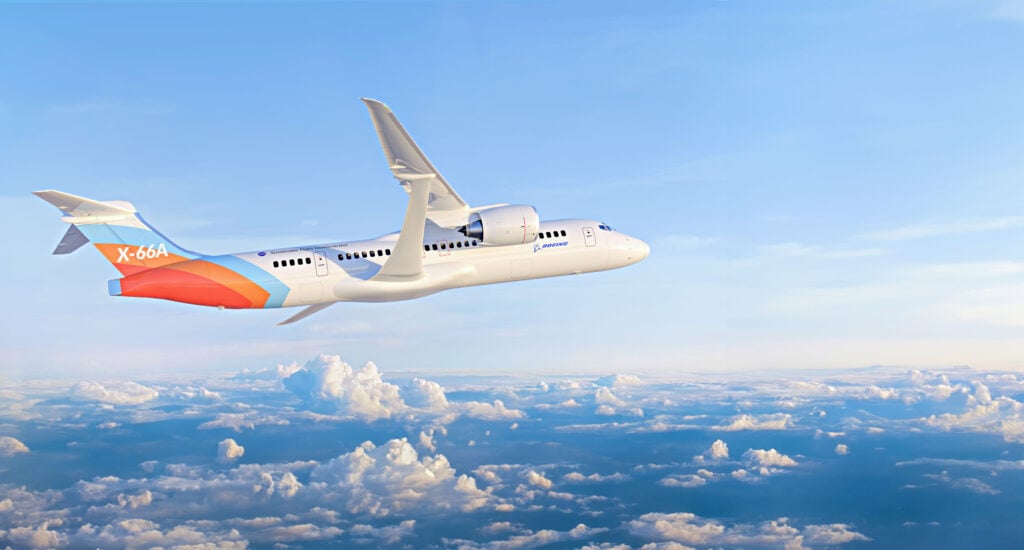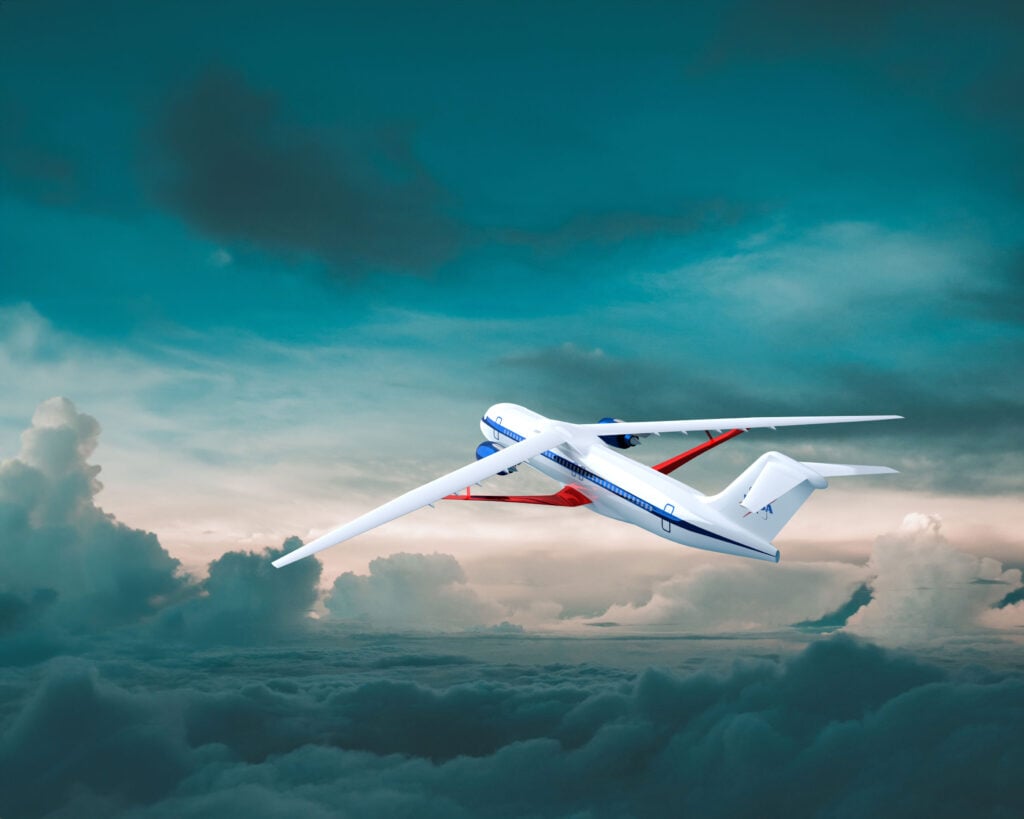In an era where sustainability is paramount, the aviation industry is changing. NASA hopes to be a world leader in this transformation.
The American Space Organisation believes that their latest plane, the X-66A, will come to symbolise eco-friendly aviation’s future. Born from a collaborative effort between NASA and Boeing, the X-66A and part of the Sustainable Flight Demonstrator initiative; this pioneering X-plane is dedicated to the U.S.’s ambitious aim of achieving net-zero aviation greenhouse gas emissions.

This goal in the U.S. Aviation Climate Action Plan may set the stage for a revolution in how we perceive and approach air travel.
The Engineering Behind X-66A
The X-66A aircraft represents a significant step toward achieving the U.S. Aviation Climate Action Plan goals. This plan outlines the nation’s commitment to reducing aviation greenhouse gas emissions, aiming to reach net zero by 2050.

NASA’s collaboration with Boeing on the X-66A project is underscored by the agency’s history of public-private partnerships in advancing aerospace technology. The aircraft’s design and features align with the broader environmental conservation objective.
The X-66A’s standout feature is its Transonic Truss-Braced Wing design. This unique configuration comprises long, thin wings stabilised by diagonal struts, allowing the aircraft to operate efficiently in the transonic region, specifically between Mach 0.8 and 1.2.
Using this speed range presents challenges, as aircraft encounter severe stresses known as shock waves, which can increase drag and affect controls. Aircraft design often involves balancing multiple factors. While an ideal wing would have an infinite span for optimal aerodynamic efficiency, practical considerations necessitate compromises.
The X-66A’s wing design draws inspiration from nature, resembling the albatross’s long, thin branches, optimised for high-speed soaring. To achieve the desired performance, engineers faced the challenge of preventing the long wings from bowing and wobbling. The solution? A truss was added for stabilisation stabilisation. While solving one problem, this design choice introduced complexities in understanding the intricate airflow across the wing, fuselage, and engines.

Boeing’s involvement in the project highlights the commercial interest in transonic flight. Overcoming the challenges of this speed range could pave the way for faster, more economical passenger flights. The X-66A’s design aims to be 30% more efficient, potentially leading to significant fuel consumption and emissions reductions.
The X-66A is a critical part of the NASA Sustainable Flight Demonstrator project. The project is a concerted effort by the agency to engage with various stakeholders, including industry experts, academia, and government organisations. The primary objective is identifying, selecting, and maturing pivotal airframe technologies. Among these, new wing designs stand out, especially those with a high likelihood of being incorporated into the next generation of single-aisle airliners. That means that the X-66A is more than just a prototype; it’s a tangible representation of the future of aviation. With its Transonic Truss Braced Wing design, the plane aims to validate the merits of this configuration on a scale that holds promise for widespread adoption in commercial aviation.
The Sustainable Flight Demonstrator project is a significant investment for the agency. NASA has committed $425 million over seven years, with Boeing and its partners contributing an estimated $725 million. Beyond funds, NASA also brings its technical expertise and state-of-the-art facilities to the table.
The X-66A represents a shift in the industry’s approach to sustainability and efficiency. As airlines and manufacturers look to the future, the X-66A is a benchmark for what’s achievable regarding environmental responsibility and performance. The insights from the X-66A’s flight tests will be invaluable for industry decisions regarding future aircraft designs.
While the X-66A is a significant step forward, it is also a reminder of the length of the journey ahead. The challenges of sustainable aviation are vast, but with initiatives like this project and the dedication of organisations like NASA and Boeing, the industry is well on its path to a more sustainable future.
TL;DR:
- The X-66A is a collaborative project between NASA and Boeing, aiming to revolutionise sustainable aviation.
- It features a unique Transonic Truss-Braced Wing design, optimised for efficiency in the transonic speed range.
- The aircraft is part of NASA’s Sustainable Flight Demonstrator project, which seeks to mature key airframe technologies for future airliners.
- The design promises up to 30% less fuel consumption, addressing the environmental challenges posed by aviation.
- Flight tests of the X-66A will provide insights for the design of new production single-aisle aircraft for the 2030s.
- The project represents a significant investment, with NASA committing $425 million and Boeing and its partners contributing an estimated $725 million.
- The X-66A is a step towards achieving the U.S. Aviation Climate Action Plan’s goal of net-zero carbon emissions by 2050.







